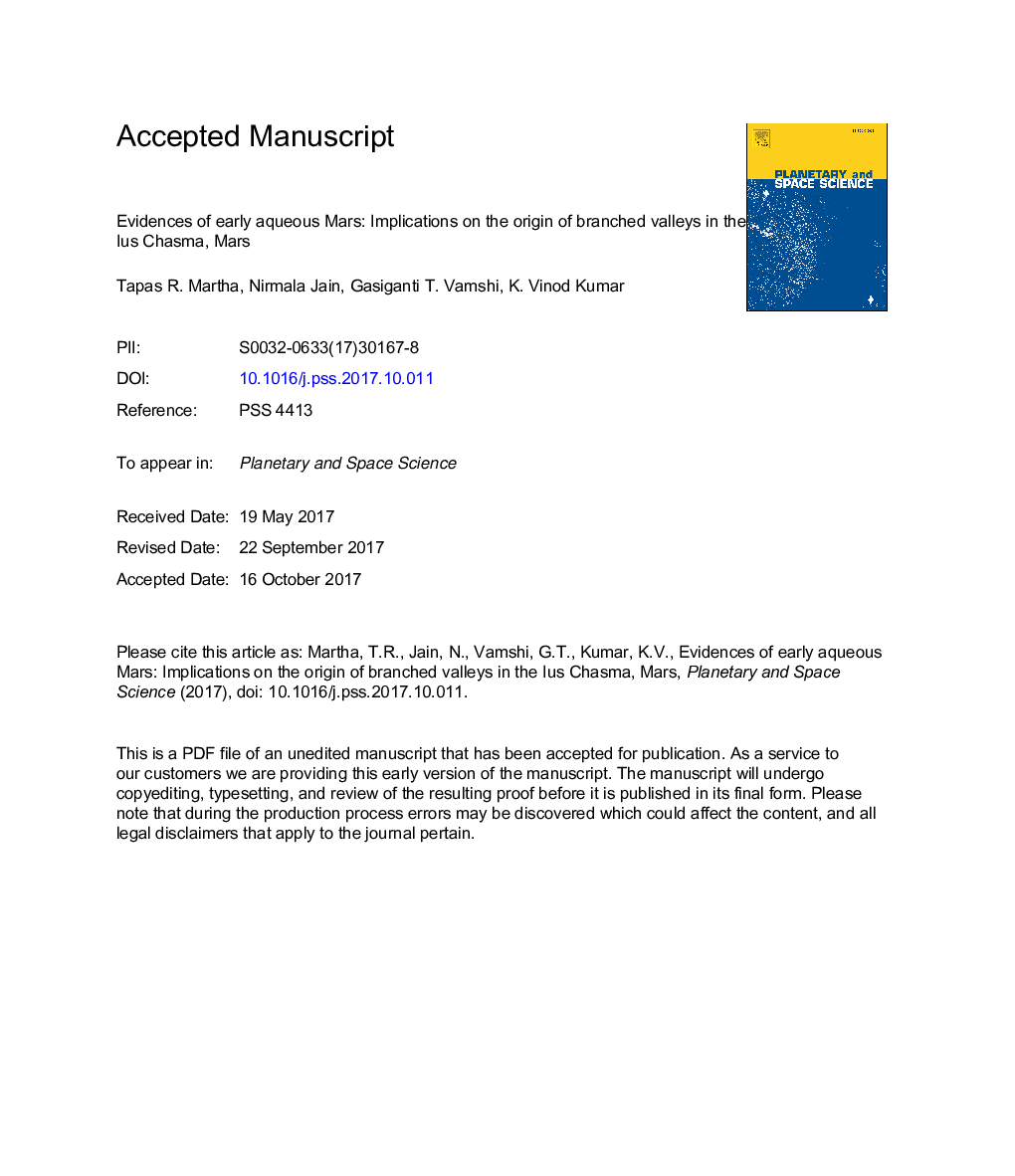| Article ID | Journal | Published Year | Pages | File Type |
|---|---|---|---|---|
| 8142567 | Planetary and Space Science | 2017 | 22 Pages |
Abstract
This study shows results of morphological and spectroscopic analyses of Ius Chasma and its southern branched valleys using Orbiter datasets such as Mars Reconnaissance Orbiter (MRO)-Compact Reconnaissance Imaging Spectrometer for Mars (CRISM), High Resolution Imaging Science Experiment (MRO-HiRISE) and digital terrain model (HRSC-DTM). Result of the spectral analysis reveals presence of hydrated minerals such as opal, nontronite and vermiculite in the floor and wall rock areas Ius Chasma indicating alteration of parent rock in an water rich environment of early Mars. Topographic gradient and morphological evidences such as V-shaped valleys with theatre shaped stubby channels, dendritic drainage and river piracy indicate that these valleys were initially developed by surface runoff due to episodic floods and further expanded due to groundwater sapping controlled by faults and fractures. Minerals formed by aqueous alteration during valley formation and their intricate association with different morphological domains suggest that surface runoff played a key role in the development of branched valleys south of Ius Chasma on Mars.
Keywords
Related Topics
Physical Sciences and Engineering
Earth and Planetary Sciences
Geophysics
Authors
Tapas R. Martha, Nirmala Jain, Gasiganti T. Vamshi, K. Vinod Kumar,
